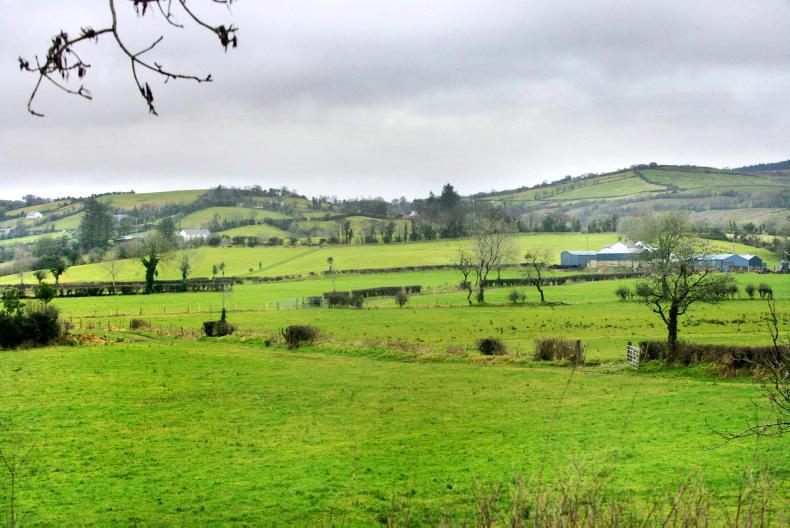The main requirement for autumn grazing is a flexible attitude. Farmers should not be fearful of grazing animals into the autumn, as they can be housed if soils get too wet. Any increase in the proportion of grass in the diet will pay dividends.
Block grazing and back fencing are as important in autumn as spring, especially when grazing higher covers (ie greater than 1,800kg DM/ha). Dividing a paddock and moving animals once a day is probably the best way of utilising grass in autumn. It is better to move the animals at the same time daily; otherwise, they will expect to be changed every time they see a person.

The diagram shows three of the main methods of dividing larger fields into grazing divisions. They are:
Strip grazing.Spokes of a wheel.Block grazing.On/off grazing
On/off grazing has been successfully used on beef farms to retain animals at pasture during periods of heavy rainfall.
On/off grazing is where the animals are let out to grass with an appetite (feed is restricted when indoors), they then graze continuously and are removed from the paddock when finished grazing (this is when you see animals start to lie down or walk about) and brought back to the shed.
This minimises soil damage, encourages good grass regrowth and ensures that grass is being well utilised.
10 steps to managing a wet autumn
1 A flexible attitude – don’t allow poaching.2 Use most sheltered and driest paddocks when grazing in wet weather.3 Strip grazing or block grazing can be used during wet weather to ensure minimal damage from poaching. Use one section per day to get the most from the grass.4 Where possible, use a back fence. This will help to protect regrowths and prevent soil damage.5 On/off grazing can be practised to reduce poaching damage and keep animals at grass for longer.6 Have multiple access points into a paddock so that grazing animals do not have to use the same entrance. If you don’t, create a 4ft to 5ft grass roadway on a fence line to get animals to the back of the paddock.7 Strategically place water troughs in the paddock so that they will service several strips or blocks when a strip wire is being used.8 Graze paddocks with heavy covers from the back of the paddock on the sheltered side.9 Change grazing break daily or every two days.10 Change animals at the same time; give them a routine. Read more
Moisture and heat driving grass growth
Weather woes: short- and long-term solutions
The main requirement for autumn grazing is a flexible attitude. Farmers should not be fearful of grazing animals into the autumn, as they can be housed if soils get too wet. Any increase in the proportion of grass in the diet will pay dividends.
Block grazing and back fencing are as important in autumn as spring, especially when grazing higher covers (ie greater than 1,800kg DM/ha). Dividing a paddock and moving animals once a day is probably the best way of utilising grass in autumn. It is better to move the animals at the same time daily; otherwise, they will expect to be changed every time they see a person.

The diagram shows three of the main methods of dividing larger fields into grazing divisions. They are:
Strip grazing.Spokes of a wheel.Block grazing.On/off grazing
On/off grazing has been successfully used on beef farms to retain animals at pasture during periods of heavy rainfall.
On/off grazing is where the animals are let out to grass with an appetite (feed is restricted when indoors), they then graze continuously and are removed from the paddock when finished grazing (this is when you see animals start to lie down or walk about) and brought back to the shed.
This minimises soil damage, encourages good grass regrowth and ensures that grass is being well utilised.
10 steps to managing a wet autumn
1 A flexible attitude – don’t allow poaching.2 Use most sheltered and driest paddocks when grazing in wet weather.3 Strip grazing or block grazing can be used during wet weather to ensure minimal damage from poaching. Use one section per day to get the most from the grass.4 Where possible, use a back fence. This will help to protect regrowths and prevent soil damage.5 On/off grazing can be practised to reduce poaching damage and keep animals at grass for longer.6 Have multiple access points into a paddock so that grazing animals do not have to use the same entrance. If you don’t, create a 4ft to 5ft grass roadway on a fence line to get animals to the back of the paddock.7 Strategically place water troughs in the paddock so that they will service several strips or blocks when a strip wire is being used.8 Graze paddocks with heavy covers from the back of the paddock on the sheltered side.9 Change grazing break daily or every two days.10 Change animals at the same time; give them a routine. Read more
Moisture and heat driving grass growth
Weather woes: short- and long-term solutions







 This is a subscriber-only article
This is a subscriber-only article











SHARING OPTIONS: